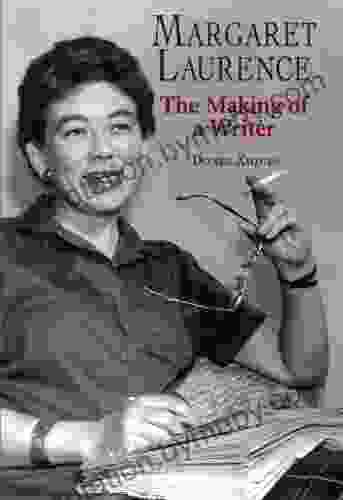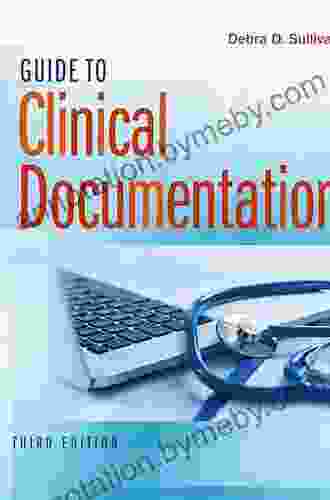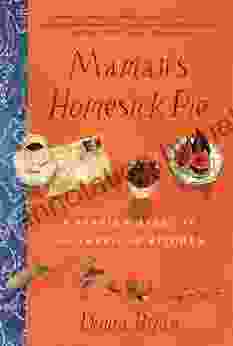Unveiling the Guide to Clinical Documentation: Empowering Healthcare Professionals with Debra Sullivan

In the ever-evolving healthcare landscape, the significance of accurate and comprehensive clinical documentation cannot be overstated. It serves as the cornerstone of patient care, payment reimbursement, and quality improvement initiatives. Recognizing this critical need, Debra Sullivan has meticulously crafted the 'Guide to Clinical Documentation,' a comprehensive resource that empowers healthcare professionals to navigate the complexities of medical record keeping.
4.6 out of 5
| Language | : | English |
| File size | : | 14867 KB |
| Screen Reader | : | Supported |
| Print length | : | 416 pages |
Chapter 1: The Art of Clinical Documentation
In the opening chapter, Sullivan sets the stage by highlighting the multifaceted nature of clinical documentation. She emphasizes its role in providing a detailed account of patient encounters, facilitating communication among healthcare providers, and serving as a medico-legal record. Sullivan skillfully guides readers through the essential elements of a well-written clinical note, including:
- Subjective data (patient's own account of their symptoms and medical history)
- Objective data (observable findings from physical examination and diagnostic tests)
- Assessment (provider's interpretation of the patient's condition based on the collected data)
- Plan (recommended course of treatment and follow-up care)
With clarity and precision, Sullivan outlines the importance of accurate and timely documentation. She explains how it not only enhances patient safety and outcomes but also ensures compliance with regulatory guidelines and supports effective medical billing practices.
Chapter 2: Mastering Medical Terminology and Abbreviations
Chapter 2 delves into the intricate world of medical terminology and abbreviations, often considered the 'language' of healthcare professionals. Sullivan recognizes the challenges posed by the vast and ever-evolving medical vocabulary and offers practical strategies for mastering this essential skill.
The chapter features:
- A comprehensive glossary of commonly used medical terms and abbreviations
- Detailed guidance on deciphering unfamiliar medical jargon
- Tips for incorporating accurate terminology into clinical documentation
Sullivan emphasizes the importance of utilizing standardized terminology and abbreviations to ensure clarity and consistency in medical records. She provides valuable insights into the role of medical dictionaries and online resources in expanding one's medical vocabulary.
Chapter 3: Navigating Documentation Guidelines and Standards
In Chapter 3, Sullivan explores the complex landscape of documentation guidelines and standards. She provides a thorough overview of:
- The Joint Commission's National Patient Safety Goals (NPSGs)
- The Centers for Medicare & Medicaid Services (CMS) Conditions of Participation (CoPs)
- The American Health Information Management Association (AHIMA) Practice Briefs
Sullivan emphasizes the significance of adhering to these guidelines and standards to ensure compliance, improve patient safety, and optimize reimbursement. She offers practical tips and resources to assist healthcare professionals in staying abreast of the latest documentation requirements.
Chapter 4: Documenting for Specific Patient Populations
Recognizing the diverse needs of patients, Chapter 4 focuses on the unique documentation considerations for specific patient populations. Sullivan provides specialized guidance on documenting for:
- Pediatric patients
- Geriatric patients
- Patients with chronic conditions
- Patients with mental health conditions
Sullivan highlights the importance of tailoring clinical documentation to the specific needs and vulnerabilities of each patient population. She offers practical strategies for documenting growth and development in children, managing multiple chronic conditions, and addressing the complexities of mental health conditions.
Chapter 5: The Power of Technology in Clinical Documentation
In Chapter 5, Sullivan delves into the transformative role of technology in clinical documentation. She explores the benefits of:
- Electronic Health Records (EHRs)
- Computer-Assisted Coding (CAC)
- Natural Language Processing (NLP)
- Voice recognition software
Sullivan provides practical guidance on utilizing these technologies to streamline documentation workflows, improve accuracy, and enhance patient safety. She also discusses emerging trends in healthcare technology and their potential impact on clinical documentation.
Chapter 6: Special Considerations in Clinical Documentation
Chapter 6 addresses specialized topics in clinical documentation, including:
- Documenting telephone encounters
- Documenting procedures and surgeries
- Documenting end-of-life care
- Documenting for research purposes
Sullivan provides clear and concise guidance on handling these complex documentation scenarios. She offers practical tips and strategies to ensure accuracy, completeness, and compliance with ethical and legal requirements.
: The Path to Excellence in Clinical Documentation
In the concluding chapter, Sullivan emphasizes the critical role of ongoing education and professional development in the field of clinical documentation. She encourages healthcare professionals to pursue opportunities for continuing education and certification to stay up-to-date with best practices and emerging trends.
Sullivan offers valuable advice on utilizing resources such as professional organizations, conferences, and online courses. She also highlights the importance of peer review and feedback in continuously improving one's clinical documentation skills.
Debra Sullivan's 'Guide to Clinical Documentation' is a comprehensive and indispensable resource for healthcare professionals seeking to elevate their documentation practices. Its clear and engaging writing style, practical examples, and up-to-date content empower readers to navigate the complexities of medical record keeping with confidence and competence.
By embracing the principles outlined in this invaluable guide, healthcare professionals can enhance patient care, optimize medical billing, ensure compliance with industry standards, and contribute to the delivery of high-quality healthcare services.
4.6 out of 5
| Language | : | English |
| File size | : | 14867 KB |
| Screen Reader | : | Supported |
| Print length | : | 416 pages |
Do you want to contribute by writing guest posts on this blog?
Please contact us and send us a resume of previous articles that you have written.
 Book
Book Novel
Novel Page
Page Chapter
Chapter Text
Text Story
Story Genre
Genre Reader
Reader Library
Library Paperback
Paperback E-book
E-book Magazine
Magazine Newspaper
Newspaper Paragraph
Paragraph Sentence
Sentence Bookmark
Bookmark Shelf
Shelf Glossary
Glossary Bibliography
Bibliography Foreword
Foreword Preface
Preface Synopsis
Synopsis Annotation
Annotation Footnote
Footnote Manuscript
Manuscript Scroll
Scroll Codex
Codex Tome
Tome Bestseller
Bestseller Classics
Classics Library card
Library card Narrative
Narrative Biography
Biography Autobiography
Autobiography Memoir
Memoir Reference
Reference Encyclopedia
Encyclopedia Thomas W Phelan
Thomas W Phelan Don T Laugh Joke Group
Don T Laugh Joke Group Jami Attenberg
Jami Attenberg Ed Vere
Ed Vere Jennifer Hilt
Jennifer Hilt Desmond Seward
Desmond Seward Ellaura Shoop
Ellaura Shoop Jason Wallace
Jason Wallace Kristin Briney
Kristin Briney Del Hungerford
Del Hungerford Juan Enriquez
Juan Enriquez Don Bluth
Don Bluth Diane Wiessinger
Diane Wiessinger Tom Chivers
Tom Chivers Scott Reynolds Nelson
Scott Reynolds Nelson Seth Meyers
Seth Meyers Dl Acken
Dl Acken Donald Keyn
Donald Keyn N L Mclaughlin
N L Mclaughlin Dianna L Van Blerkom
Dianna L Van Blerkom
Light bulbAdvertise smarter! Our strategic ad space ensures maximum exposure. Reserve your spot today!
 Leo TolstoyEnter the Saint: Unraveling the Enigmatic World of Leslie Charteris' Iconic...
Leo TolstoyEnter the Saint: Unraveling the Enigmatic World of Leslie Charteris' Iconic...
 William FaulknerTwo Teenage Immigrants Making Life in America: A Journey of Resilience and...
William FaulknerTwo Teenage Immigrants Making Life in America: A Journey of Resilience and...
 Oscar WildeAnimals and Plants to Amaze, Surprise, and Astonish: A Journey into Nature's...
Oscar WildeAnimals and Plants to Amaze, Surprise, and Astonish: A Journey into Nature's... Jeffery BellFollow ·17.8k
Jeffery BellFollow ·17.8k Ross NelsonFollow ·19.1k
Ross NelsonFollow ·19.1k Bret MitchellFollow ·18.3k
Bret MitchellFollow ·18.3k Cruz SimmonsFollow ·8.3k
Cruz SimmonsFollow ·8.3k Keith CoxFollow ·4.2k
Keith CoxFollow ·4.2k Ricky BellFollow ·14.5k
Ricky BellFollow ·14.5k Fredrick CoxFollow ·17.5k
Fredrick CoxFollow ·17.5k Douglas AdamsFollow ·7.9k
Douglas AdamsFollow ·7.9k

 Cruz Simmons
Cruz SimmonsGuide To Pencak Silat Kuntao And Traditional Weapons:...
Immerse yourself in the captivating world of...

 Dalton Foster
Dalton FosterUnlock Your Financial Freedom: Dive into the ABCs of Real...
Are you ready to embark on a...

 George Orwell
George OrwellThe Advanced Guide to Real Estate Investing: Your...
Are you ready to embark on...

 Will Ward
Will WardMargaret Laurence: The Making of a Writer
Margaret Laurence (1926-1987) was one of...

 Jorge Amado
Jorge AmadoThe ABCs of Property Management: A Comprehensive Guide...
Owning and managing rental...
4.6 out of 5
| Language | : | English |
| File size | : | 14867 KB |
| Screen Reader | : | Supported |
| Print length | : | 416 pages |








